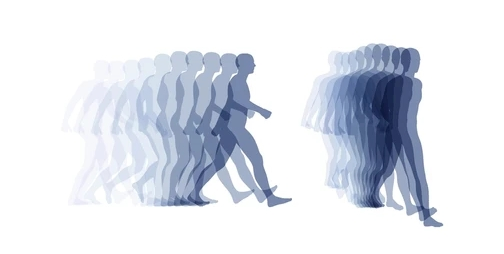AI Video Frame Interpolation Explained

Learn about AI video frame interpolation and how it enhances video quality. Discover the power of AI in our latest blog post.
As video content becomes more and more popular, the demand for high-quality, visually appealing videos is also increasing. This is where AI-powered video frame interpolation can help. In this blog, we will dive deep into the concept of AI video frame interpolation and how it works. We will discuss the process involved in creating interpolated frames using AI models, as well as the tools commonly used to achieve this. Additionally, we will explore practical applications and benefits of AI video frame interpolation, such as enhancing video playback, creating slow-motion videos and upgrading legacy content. We’ll also touch on the challenges and future directions of this technology and how it may impact the future of video editing. Whether you’re a professional videographer or simply curious about the technology behind video creation, this blog is for you.

The Basics of AI Video Frame Interpolation
AI video frame interpolation leverages artificial intelligence to enhance video quality and create seamless transitions. By generating new frames between existing ones, it elevates the viewing experience and is widely used in video editing. AI frame interpolation tools offer a range of features for enhanced video resolution.
The Concept behind AI Video Frame Interpolation
AI video frame interpolation involves leveraging artificial intelligence models to insert new frames in video content, ultimately increasing the video frame rate and enhancing visual quality. This process is essential for ensuring smooth video playback and improving the overall flow of video content. Frame interpolation plays a crucial role in elevating the viewing experience and is widely utilized in video editing and content creation.
The Role of AI in Video Frame Interpolation
Artificial intelligence significantly contributes to creating new frames for video frame interpolation, improving playback of low frame rates, and revolutionizing video editing workflows. AI-powered tools offer high visual quality, smoothness, and pixel-level image generation, enhancing the overall video editing process.

The Process of AI-Powered Video Frame Interpolation
Data collection and management form the foundation of AI-powered video frame interpolation, while model training and development further enhance the algorithms. The resulting frame generation and integration processes significantly boost video frame rate and quality, simplifying content creation and editing workflows. This is particularly beneficial for beginners in video editing.
Data Collection and Handling
The diversity of data in AI video frame interpolation ensures accurate frame generation. Proper data handling is crucial for AI models to train effectively. Comprehensive data plays a critical role in enhancing video quality through AI frame interpolation. Effective data collection and handling directly influence the accuracy of video frame interpolation.
Model Training and Development
Continuous refinement of AI through model training optimizes frame interpolation algorithms, elevating software capabilities and accuracy. AI model development plays a key role in enhancing video frame generation tools, enhancing performance and quality.
Frame Generation and Integration
AI technology enables seamless frame generation, enhancing video playback smoothness. AI-driven frame generation significantly improves video frame rate and quality, simplifying frame integration in video content creation. Integration of new frames using AI enhances visual quality and smoothness, elevating the overall viewing experience.

The Tools Used for AI Video Frame Interpolation
AI-powered tools for video frame rate enhancement offer a variety of features, simplifying content creation and improving video quality. Choosing the right tool is crucial for enhancing the resolution and smoothness of video playback. The interface of AI frame interpolation software provides a free and seamless tool for video frame rate improvement.
Overview of Popular AI Interpolation Tools
AI frame interpolation tools offer advanced features for video frame rate improvement, facilitating smooth transitions in footage. Their user-friendly interface simplifies video frame interpolation for beginners, providing a variety of features for content creation. Additionally, the availability of free AI frame interpolation tools benefits videography enthusiasts.
Choosing the Right Tool for Your Needs
When selecting an AI frame interpolation tool, it’s crucial to consider the range of features offered for video quality enhancement. The right software significantly impacts video playback and visual quality, influencing smoothness and viewing experience. Choosing the appropriate tool optimizes video resolution and flowframes.
Practical Applications and Benefits of AI Video Frame Interpolation
Enhancing the viewing experience with smooth transitions, AI video frame interpolation seamlessly transforms low frame rate footage. The AI model upgrades video content by generating new frames, improving resolution and offering a variety of features for videography beginners.

Enhancement of Video Playback
AI frame interpolation software enhances video playback smoothness, increases frame rate, and ensures smooth transitions between consecutive frames. The app upgrades video footage pixel by pixel, providing better visual experience. With the use of NLP terms such as audio, fps, and animation, the video quality is significantly improved.
Creation of Slow-Motion Videos
The AI-powered frame interpolation software effortlessly creates smooth slow-motion videos, leveraging artificial intelligence for high-quality content creation. This user-friendly tool generates seamless slow-motion footage, making the process of creating slow-motion content smooth and efficient.
Upgrading of Legacy Content
Enhancing the visual quality of older video footage seamlessly, a video frame interpolation app effectively upgrades legacy content. Using AI technology, the software tool transforms lower frame rate content into smooth video playback, pixel by pixel. This enhances the overall visual quality of the legacy video content.

The Challenges and Future Directions of AI Video Frame Interpolation
Navigating AI video frame interpolation poses quality control challenges, emphasizing the need for computational resources. Furthermore, legal considerations for content creators require attention to copyright implications and licensing agreements. Addressing these challenges will drive advancements in frame interpolation, shaping the future of video content creation.
The Issue of Quality Control
Maintaining the visual quality in video frame interpolation proves challenging for AI technology. Quality control is essential for smoothness in AI-powered video frame interpolation. The AI model’s frame interpolation software tool necessitates quality control for video content creation, emphasizing the need for effective measures to ensure smooth video playback.
Availability and Use of Computational Resources
Efficient AI video frame interpolation relies on pivotal computational resources. The model’s effectiveness and smoothness depend greatly on resource availability. Computational resources determine the tool’s performance, speed, and workflow smoothness. Effective usage of resources is crucial for seamless video frame interpolation.

How Does AI Video Frame Interpolation Impact the Future of Video Editing?
AI video frame interpolation has the potential to revolutionize video editing techniques by introducing smooth transitions and enhancing visual quality. With the help of artificial intelligence, video editing becomes a seamless and enhanced experience. The future of video editing is transformed by AI frame interpolation software, offering improved visual quality and smoothness.
Potential Legal Considerations in AI Video Frame Interpolation
The impact of AI video frame interpolation on content creation and editing raises potential legal considerations. Legal implications must be considered for videography workflow, affecting the processes of video content creation and editing. The AI video frame interpolation software tool necessitates legal considerations for seamless content creation.
Conclusion
In conclusion, AI video frame interpolation is a revolutionary technology that enhances video playback, enables the creation of mesmerizing slow-motion videos, and breathes new life into legacy content. With the ability to generate seamless frames, AI video frame interpolation has opened up new possibilities in the field of video editing. However, there are challenges that need to be addressed, such as maintaining quality control and ensuring access to sufficient computational resources. As the technology continues to evolve, it is important to consider potential legal considerations associated with AI video frame interpolation. Overall, AI video frame interpolation is shaping the future of video editing, providing filmmakers and content creators with powerful tools to push the boundaries of visual storytelling.
novita.ai provides Stable Diffusion API and hundreds of fast and cheapest AI image generation APIs for 10,000 models.🎯 Fastest generation in just 2s, Pay-As-You-Go, a minimum of $0.0015 for each standard image, you can add your own models and avoid GPU maintenance. Free to share open-source extensions.
Recommended reading